|
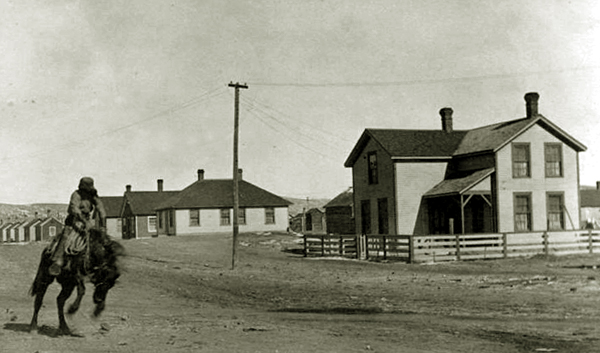
"Boarding House," Hanna No. 2, 1910. Behind the hotel
are miners' houses.
A portion of the boarding house had been brought from Carbon.
During World War I, the boarding house was expanded into the Hanna Hotel as seen
in the next photograph. The Union Pacific Coal Company in addition to provided single-family houses for a small rent for
married coal miners, provided boarding houses for single miners.
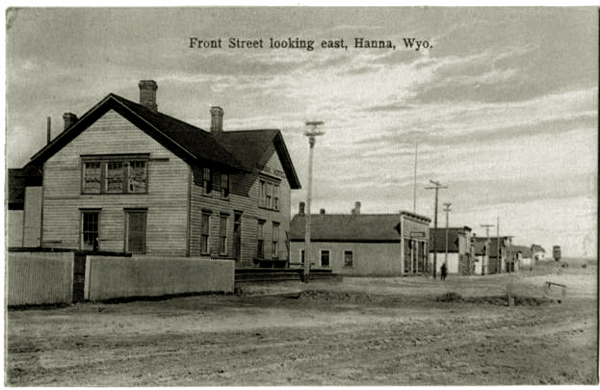
Front street, Hanna, looking east. The Hanna Hotel on the left.
Cottage Home was converted from the Hanna School when a new school was constructed. Various wedding receptions,
baby showers and parties were held at Cottage Home.
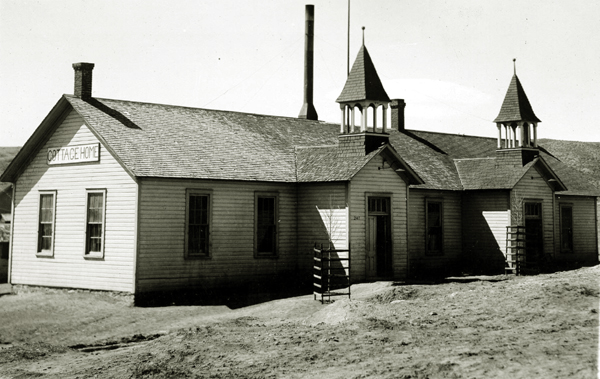
Cottage Home
Cottage Home was converted from the Hanna Public School when a new school was constructed. Various wedding receptions,
baby showers and parties were held at Cottage Home.
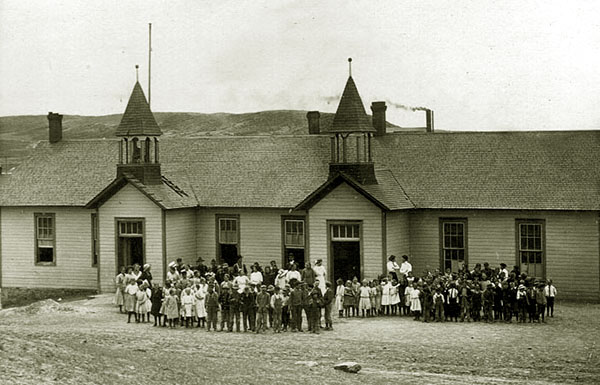
Hanna Public School.
In addition to Temperance Hall, other venues for activities included the Opera House which also had dances, showed live shows and at
which a roller skating rink was installed in 1913 and John Lnden's Hall. The activities at Temperance Hall may have been maore fun.
The Rock River Review noted one benefit for a miner from Mine 4 who was injured. Dances were held both at Temperance Hall
and at the Opera House. The dance at the Opera House broke up at 1:00 in the morning while the festifities continued on at
Temperance Hall. The paper reported that dances from the Opera House "just drifted over to Finn Hall and reported the 'Jazziest' of times there."
Linden Hall was initially a saloon constructed by John Linden in 1890 outside of town. Linden was employed by the Union Pacific Coal Company as a carpenter
to assist in the construction of the initial houses in the town. Later he was caught up in
accusations that the Union Pacific Coal Company had used false entrymen to gain additional coal lands. In 1891, the Union Pacific permitted Lindon to relocate the building to Front Steet.
Sometime around 1911 Linden and his wife Mary moved to Laramie City where Mary died in 1913. The saloon was sold to John Thomas who, after prohibition
came in, operated it as a pool and dance hall. Thomas was killed at a railway crossing accident in 1923. Following Thomas' death
the Coal Company combined the saloon with the building next door and
used it as a community hall where dances, high school classes and basketball games were held. The building also housed the library. In
1926, the opera house burned.
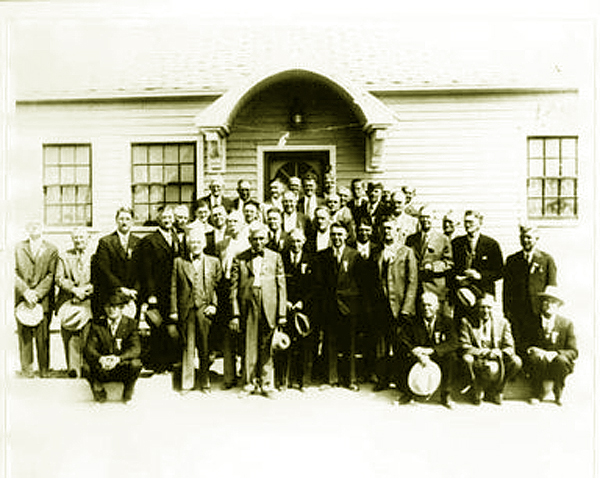
Knight of Columbus in front of Community Hall, approx. 1930.
After the closure of Union Pacific mines in
1954, the building was deeded to the town for $1.00. It currently houses the Hanna Community Museum. It is the oldest
building in Hanna and was placed on the National Register in 1984.
Next Page: Hanna Continued.
|